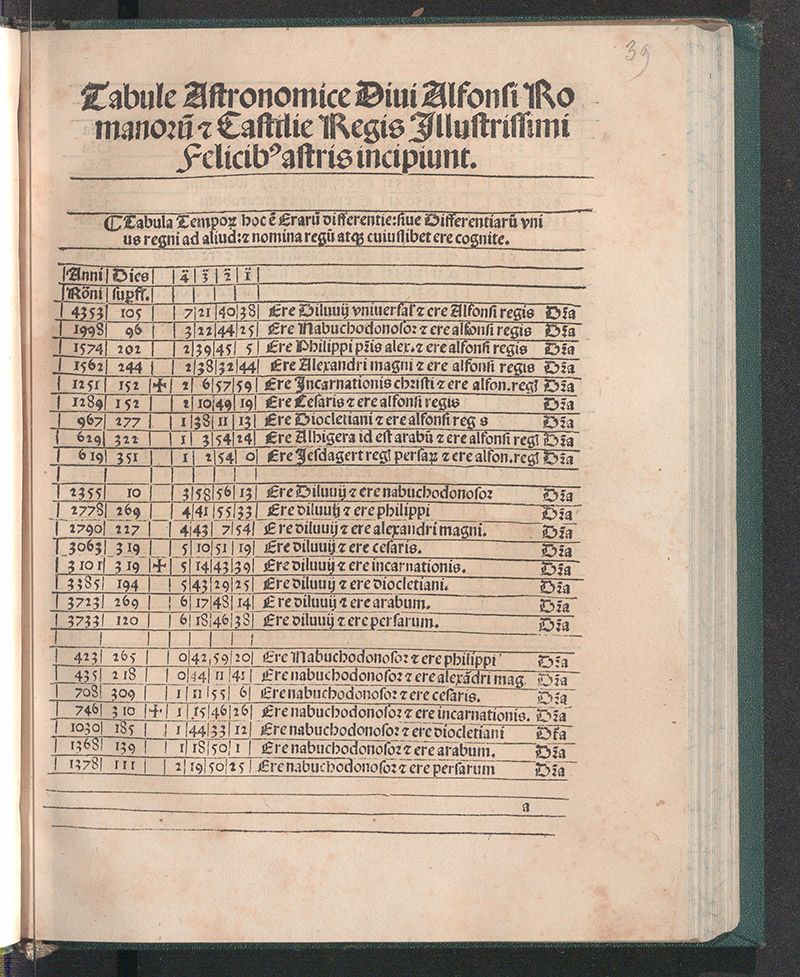The Sexagesimal System

- Fol. a1r.
- Alphonsus, Rex Castellae (1221-1284).
- Tabulae astronomicae. Ed: Johannes Lucilius Santritter. With additions by Augustinus Moravus. Add: Johannes Lucilius Santritter: Canones in tabulas Alphonsi.
- Venice: Johannes Hamman, 31 Ot. 1492.
Shown here is an example of the sort of table found in this book. It includes a list of dates based on the number of years between two distinctive events, each of which is defined as an era. For instance, 4353 Roman years (Anni Romani) plus 105 remaining days (Dies supersi) is the time span between the date of the biblical deluge and 1252, the year of King Alfonso’s coronation (Ere Diluvii universalis et ere Alfonsi regis Differentia). Next, each of these dates must be converted into the sexagesimal chronological system, which is represented by fourths, thirds, seconds, and primes (4,3,2,1). To calculate these numbers, it is necessary to convert any given year into days, which is the basic unit of time in the Alphonsine Tables. The resulting number of days will be subsequently divided by 60, the remainders of each of these divisions becoming the primes, seconds, thirds, and fourths respectively.